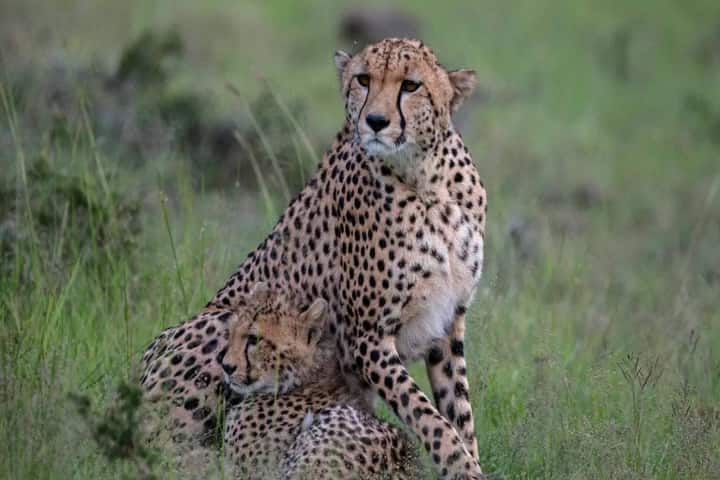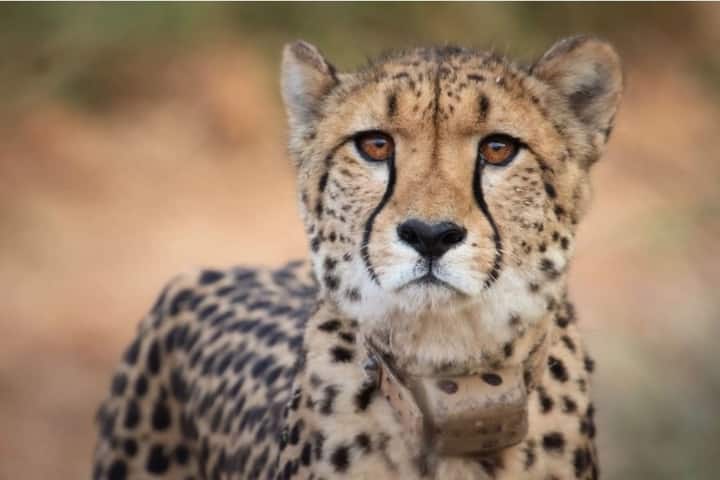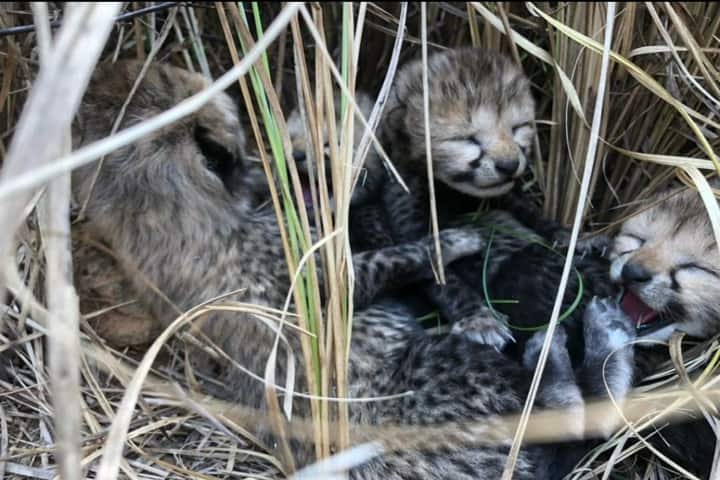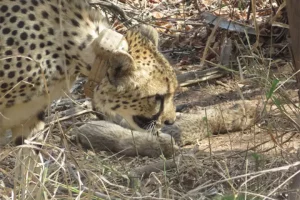Not just wildlife enthusiasts across the globe but also many nations are keenly watching how Project Cheetah — the world’s first intercontinental reintroduction of species — pans out. With a view to monitor how the cheetahs who had become extinct in Indian in 1952 and were reintroduced from Namibia and later South Africa in Madhya Pradesh’s Kuno National Park September last year and this February respectively, a team of experts studied them.
The team which was formed under the directions of the National Tiger Conservation Authority included experts Adrian Tordiffe, Veterinary Wildlife Specialist, Faculty of Veterinary Science, University of Pretoria, South Africa; Vincent van dan Merwe, Manager, Cheetah Metapopulation Project, The Metapopulation Initiative, South Africa; Qamar Qureshi, Lead Scientist, Wildlife Institute of India, Dehradun and Amit Mallick, Inspector General of Forests, NTCA.
On April 30, the experts visited KNP and examined all the aspects of this important project.
A #milestone event in history of #wildlife #conservation of #India. We are delighted to share that four cubs have been born to one of the cheetahs translocated to India on 17th Sep. 22.@narendramodi@byadavbjp@CMMadhyaPradesh@KrVijayShah #Cheetah #cubs #MadhyaPradeshNews pic.twitter.com/FkqNCMdC9R
— Kuno National Park (@KunoNationalPrk) March 29, 2023
The project started on a bright note as all the 20 cheetahs – eight from Namibia and 12 from South Africa — had survived the initial capture, quarantine and the long journey by air and road to the purpose-built quarantine and larger acclimatization camps in KNP.
The experts highlighted that the cheetahs like other big cats need a wide range but their movements are unpredictable and dependent on several factors. It will take months before these felines establish their own communication networks and settle down in relatively fixed home ranges. They stressed that it is imperative that no group should become isolated as it will cause genetic isolation.
Talking about the capacity of cheetahs that KNP can sustain, the experts said it not possible to predict that till these animals have established their range. They also pointed out that even when these ranges are charted out, there can also be overlap depending on the prey density and several other factors.
At present only four big cats have been let out from the fenced acclimatization camps into free-ranging conditions. Of these two males — Gaurav and Shaurya — have not evinced any interest in exploring and stayed within the park. Aasha, the female explored KNP’s eastern side but remained within the landscape.

The fourth Pawan, the male went beyond the boundaries of the park on two occasions, even venturing into a farm near the Uttar Pradesh border. The vets darted him and brought him back to the acclimatization camp.
All KNP’s cheetahs are fitted satellite collars that record their location twice a day or more while monitoring teams follow the released cheetahs 24 hours a day from a distance. They document information on the prey hunted by them and any other information pertaining to their behaviour.
After inspecting the cheetahs, the experts found them to be in good physical condition, making kills at regular intervals and displaying natural behaviours.
They have now decided that five more cheetahs — three females and two males — will be released from the acclimatisation camps into free-roaming conditions before monsoon in June. The other 10 will be kept in the camps during monsoon. The female who gave birth in March, will remain in her camp to hunt and raise her four cubs.

The team also shed light on the two deaths that have occurred so far. The six-year-old Sasha from Namibia became ill in January and her blood tests showed that she had chronic renal insufficiency. Though she was stabilised, she died in March. CR failure is common among captive cheetahs and is not infectious, thus others are not in any danger.
The adult male from South Africa, Uday, had been found to have acute neuromuscular symptoms on April 23. Despite collecting his blood and other samples for tests, he died that day itself. Post-mortem revealed death due to failure of the heart and lungs.




















